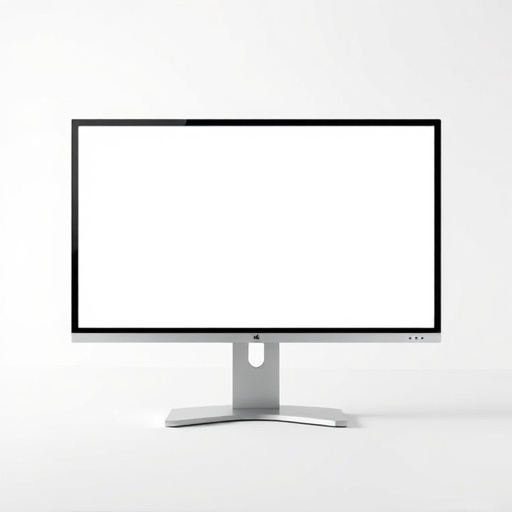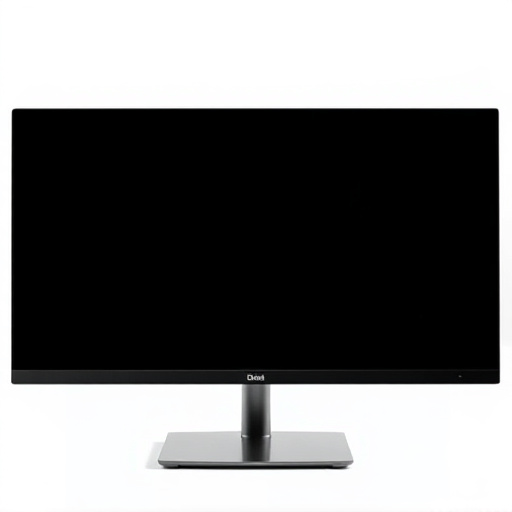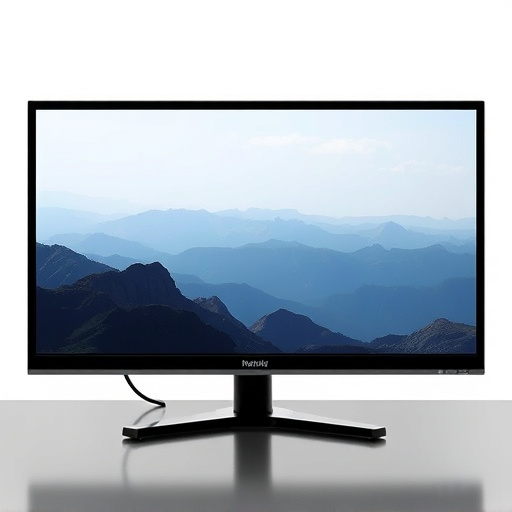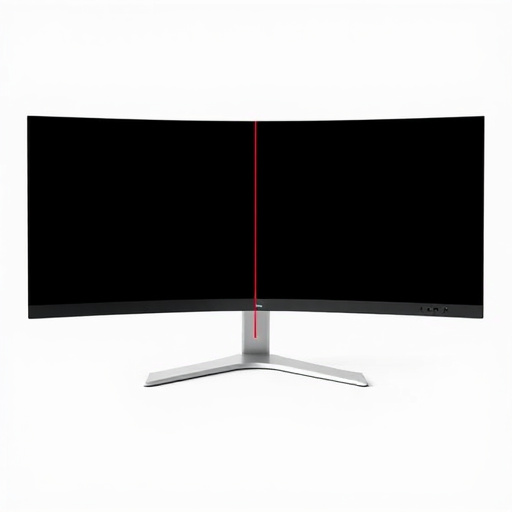Native resolution, measured in pixels like 1920×1080 or 2560×1440, is crucial for modern displays, offering sharp visuals without distortion. Display scaling, a vital process, adjusts content size to fit different screen resolutions while preserving visual quality. High-resolution content on lower-res monitors may experience blurring and pixelation. Advanced display technologies like 4K necessitate precise pixel-perfect rendering to maintain artistic intent. Industries like advertising, gaming, and UI design rely on native resolution for optimal user experiences, layout consistency, and performance. Future advancements in hardware and software will drive refined display scaling techniques for consistent pixel perfection across diverse devices.
In the digital age, understanding display scaling is crucial for ensuring optimal visual experiences. This article delves into the native versus non-native resolution debate, exploring why pixel-perfect alignment matters on modern high-resolution displays. We examine the fundamentals of native resolution, dissect the implications of non-native scaling, and analyze its impact on various industries. Additionally, we look ahead to future trends in display technology and scalability, shedding light on how advancements may reshape our visual interactions.
- Understanding Native Resolution: The Basis for Optimal Display
- Non-Native Resolution: What Happens When Pixels Don't Match Up?
- Display Scaling: The Process and Its Impact on Visual Quality
- Why Pixel-Perfect Matters in Modern High-Resolution Displays
- Practical Implications: Industries Affected by Native vs. Non-Native Scaling
- Looking Ahead: Future Trends in Display Technology and Scalability
Understanding Native Resolution: The Basis for Optimal Display

Native resolution is a fundamental concept in modern displays, acting as the bedrock for achieving optimal visual quality. It refers to the physical number of pixels on a screen, represented by dimensions such as 1920×1080 or 2560×1440. This pixel array forms the display’s native grid, determining its ability to reproduce images and text with precision. When content is displayed at its native resolution, each pixel corresponds directly to a single point on the screen, resulting in sharp and detailed visuals without any distortion or blurring.
Understanding native resolution is crucial for effective display scaling. Scaling refers to the process of adjusting the size of an image or text to fit different screen sizes while maintaining visual integrity. However, when content is scaled up or down from its native resolution, pixels can become noticeable, leading to a loss in clarity and detail. By displaying at native resolution, devices ensure that every pixel contributes to the overall picture, creating a seamless and immersive visual experience for users across various display types and sizes.
Non-Native Resolution: What Happens When Pixels Don't Match Up?

When a non-native resolution is displayed on a modern monitor, it can lead to noticeable artifacts and visual distortion. Non-native resolution refers to attempting to show an image or video that has been created at one specific size on a display with a different aspect ratio or pixel density. The most common scenario is when you try to display a high-resolution image on a lower-resolution monitor, causing the pixels to stretch or shrink to fit the screen.
This process involves display scaling, which can introduce blurring, pixelation, or even strange color shifts. Pixel-perfect rendering becomes especially critical with the rise of 4K and higher resolution displays where any misalignment is far more evident. The goal of using non-native resolutions is often to fit content onto a screen without distorting it, but at what cost? To achieve pixel-perfect display, scaling methods need to be carefully considered, ensuring minimal impact on visual quality.
Display Scaling: The Process and Its Impact on Visual Quality

Display scaling is a process that adjusts the size of an image or text to fit a specific screen resolution, ensuring pixels align with the display’s physical dimensions. This technique is crucial in modern visuals as it maintains visual quality and prevents jagged edges or blurriness. The impact on user experience is significant; correct scaling enhances readability, makes graphics more appealing, and ensures consistency across different devices.
When an image is scaled, each pixel is proportionally adjusted to match the display’s dot pitch, resulting in a sharper and more detailed representation. This process can be as simple as changing the dimensions of an image or complex, involving advanced algorithms for smoother transitions. In today’s high-resolution displays, accurate scaling is essential to deliver pixel-perfect visuals, ensuring that every detail is rendered distinctly and beautifully.
Why Pixel-Perfect Matters in Modern High-Resolution Displays

In the era of high-resolution displays, pixel-perfect rendering has become paramount. Modern screens offer unprecedented detail and clarity, with resolutions ranging from Full HD to 4K and beyond. However, mere high resolution isn’t enough; achieving pixel-perfect accuracy ensures that every element on the screen is rendered precisely, maintaining the original artist’s or designer’s intent. This is crucial for preserving the integrity of images, text, and graphics, especially in design, photography, and video editing.
Pixel-perfect rendering involves precise display scaling to match the source material’s aspect ratio and resolution without introducing unwanted artifacts or distorting the visual content. This ensures that text remains crisp and readable, lines are straight, and shapes maintain their original forms. With display scaling properly configured, users can enjoy a seamless viewing experience, free from blurring, pixelation, or other visual imperfections that can detract from the overall quality of modern high-resolution displays.
Practical Implications: Industries Affected by Native vs. Non-Native Scaling

In the realm of modern displays, native versus non-native resolution and its implications have far-reaching practical effects across various industries. When it comes to display scaling, native resolution is the golden standard for pixel-perfect visuals. This is particularly crucial in sectors like graphic design, photography, and video production where precision and detail accuracy are paramount. Using non-native scaling methods can lead to visual artifacts, blurring, or distortion, significantly impacting the overall aesthetic quality of digital content.
Industries such as advertising, gaming, and user interface (UI) development also feel the pinch. Non-native scaling can result in less than optimal user experiences, including reduced performance, inconsistent layouts, and potentially frustrating user interactions. In contrast, native resolution ensures that elements on a screen are rendered accurately, enhancing both visual appeal and usability. This is especially important as displays continue to evolve with higher refresh rates and more diverse form factors, underscoring the significance of display scaling in delivering exceptional visual experiences across multiple platforms.
Looking Ahead: Future Trends in Display Technology and Scalability

As we peer into the future of display technology, several trends emerge that promise to reshape how we interact with digital content. One area of significant focus is display scaling, driven by advancements in both hardware and software capabilities. The evolution of higher refresh rates and improved panel technologies will necessitate more sophisticated rendering techniques to ensure pixel-perfect visuals across various screen sizes.
Future displays are expected to offer not just higher resolutions but also dynamic scale adjustments, adapting content to fit different viewing environments. This shift towards adaptive scaling will be crucial in addressing the growing demand for immersive experiences on everything from smartphones and tablets to augmented reality (AR) headsets and virtual reality (VR) systems. These innovations promise to make pixel-perfect resolution a standard across all devices, ensuring consistent visual quality no matter the screen size or context.
In the pursuit of delivering pixel-perfect visuals, understanding the intricacies of native versus non-native resolution is paramount for modern display technologies. As we’ve explored, non-native scaling can result in noticeable artifacts and reduced visual quality, while native resolutions offer a seamless and accurate representation of content. Moving forward, display scaling techniques will continue to evolve, addressing these challenges and enhancing user experiences across various industries. By staying attuned to advancements in display technology, we can anticipate even greater precision and clarity in how we interact with digital content.
